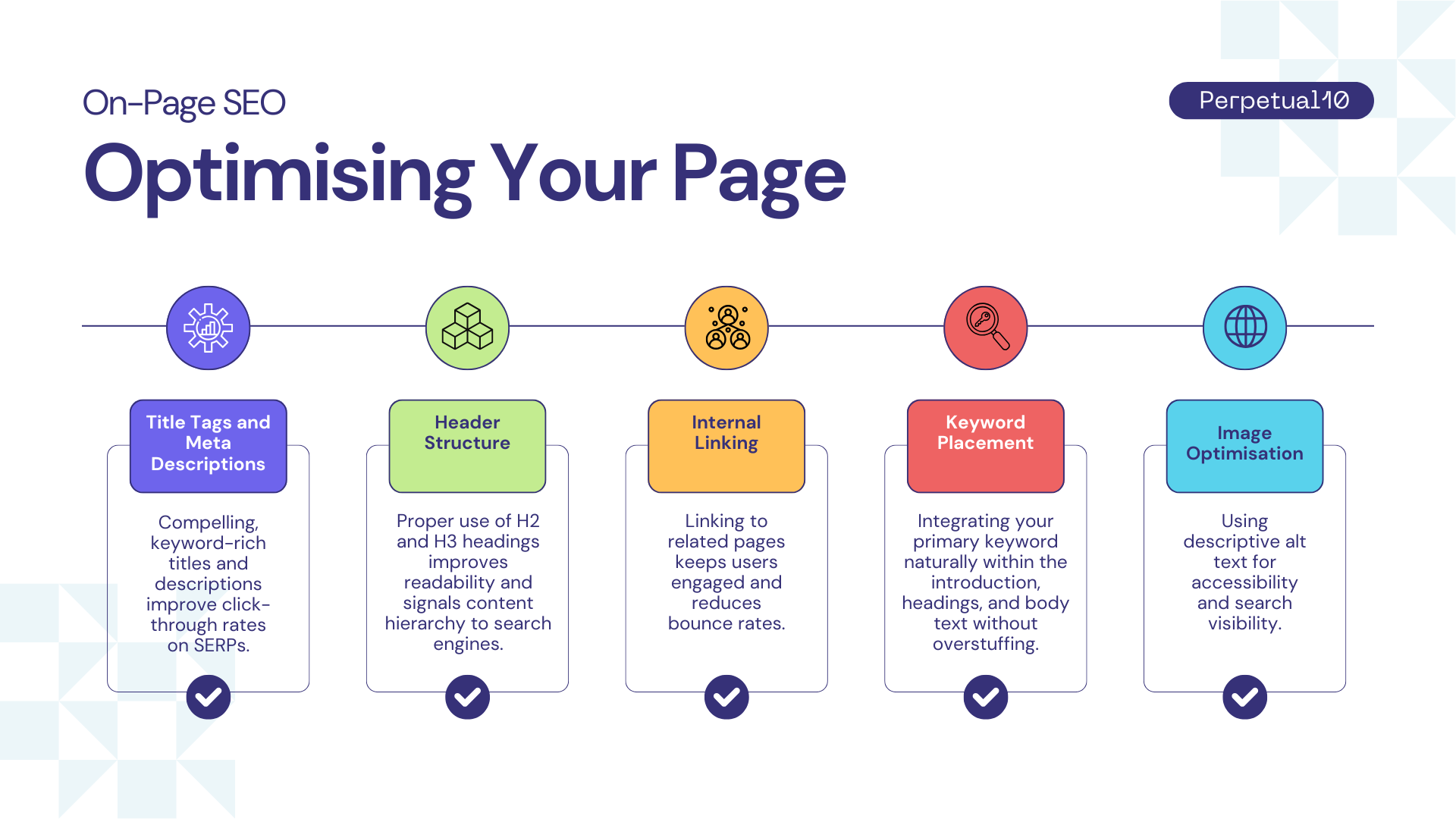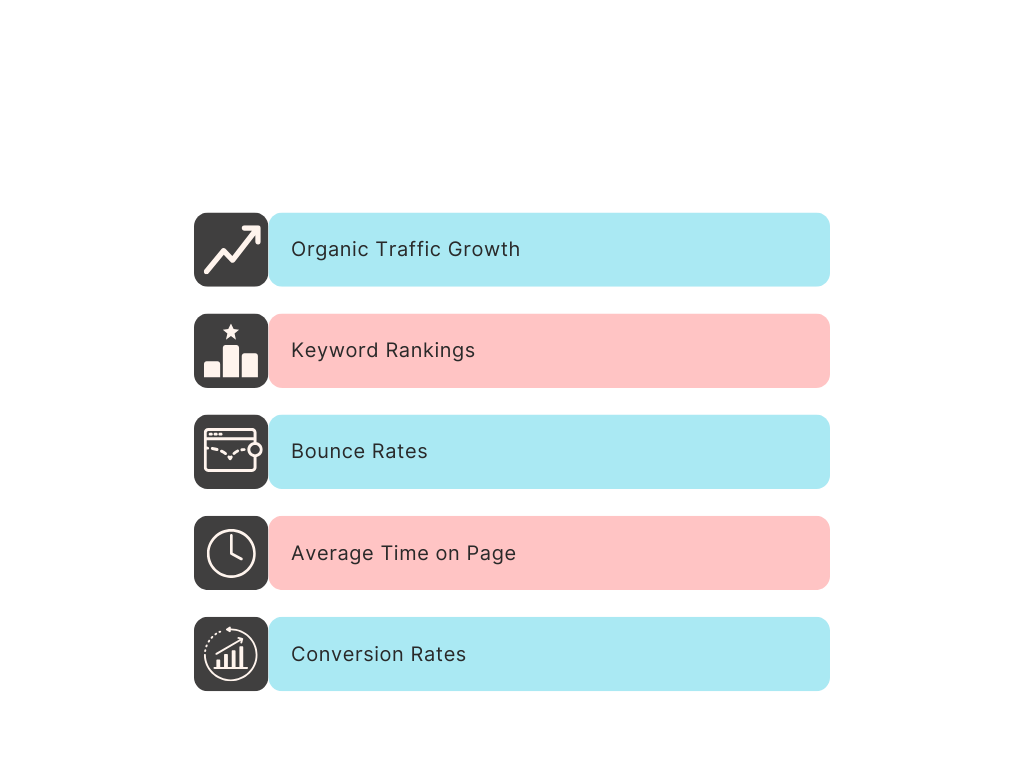The Role of SEO in Content Marketing
Content marketing and search engine optimisation (SEO) are among the most effective digital tactics today. However, they are frequently handled using separate techniques when, in fact, they complement one another perfectly. If you want your business to rank in Google and capture an engaged audience, integrating SEO into your content marketing is essential.
Understanding SEO and Its Importance
SEO is the process of improving your website’s visibility in search engine results pages (SERPs). When done correctly, it helps your content appear in front of users actively searching for information, products, or services relevant to your business.
The ultimate goal of SEO is to increase organic traffic to your site. Unlike paid advertising, SEO focuses on earning traffic naturally by making your web pages easy for both search engines and users to understand. To achieve this, SEO encompasses several key areas:
On-Page SEO – Optimising elements on your web pages, such as titles, headings or meta descriptions and the structure of your content.
Off-Page SEO – Building your site’s authority through backlinks from other reputable sites and social media visibility.
Technical SEO – Enhancing site speed, mobile responsiveness, and ensuring your site architecture supports easy crawling and indexing by search engines.
A strong SEO foundation ensures that your content has the best chance of appearing when users search for a term linked to your brand. Given that 75% of users never look past the first page of search results (HubSpot), being near the top is vital in increasing your visibility and quantity of clicks.
What Is Content Marketing?
Content marketing is the process of creating and distributing valuable content to attract, engage, and retain a specific audience. Unlike overt advertising, it focuses on providing information that educates, informs, or entertains, gradually building trust and establishing your company as an industry authority.
Content can take many forms, including:
The main principle is to publish content relevant to your target audience's needs and search habits. Content marketing nurtures potential customers throughout their purchasing journey by addressing their questions and challenges.
Why SEO and Content Marketing Belong Together
SEO and content are not mutually exclusive. Even the most engaging piece of content may not be discovered if it is not optimised for search. Equally, your SEO efforts will fail to produce long-term results if you do not create high-quality content, as search engines prioritise useful and authoritative content.
Here’s why their integration is so important:
SEO amplifies visibility: By optimising your content for search engines, you ensure that it ranks higher in search results and reaches a larger audience.
Content gives SEO meaning: Search engines want to serve users the most relevant and valuable content. Your ability to provide depth, clarity, and originality influences your pages' performance.
Together, they build authority: Regularly publishing well-optimised blog posts and guides demonstrates expertise and builds trust signals for search engines, improving your ability to rank across a wider range of keywords.
In short, SEO and content marketing are no longer optional; they are the foundation of digital growth.
How SEO Supports Content Marketing
1. Keyword Research and Search Intent
Keyword research is the foundation of any effective SEO-driven content strategy. Identifying relevant keywords with high search volume allows you to create content that addresses what people are actively looking for. This ensures your content meets both user needs and the intent behind their queries.
Search intent typically falls into four categories. If you’d like to learn more about what search intent means and how to use it to your advantage, we’ve published a detailed guide, which you can read here.
Understanding the intent allows you to tailor your content creation to meet expectations. Blog posts, for example, can be used to target informational searches, whereas detailed product or service pages are designed for transactional intent.
2. On-Page SEO for Better Rankings
Once you've decided on your topics and keywords, you must optimise your content for search engines. On-page SEO includes optimising the following elements:
When you establish your content for search engines using these practices, you significantly increase your chances of ranking.
3. Backlink Building Through Quality Content
High-quality, original content acts as a magnet for backlinks. When other websites find your article useful, they reference it, boosting your domain authority in the process. Google views backlinks as votes of confidence, making them one of the most influential ranking factors.
Long-form guides, original research, and insightful analysis are examples of content types that naturally attract backlinks. Incorporating these into your strategy not only improves rankings but also positions your brand as an industry authority.
4. Improving User Experience
Search engines measure user signals like dwell time and bounce rates to determine content quality. If visitors stay longer on your page, it suggests that your content is meeting their needs. Therefore, creating engaging and well-structured material isn’t just good for readers, it’s a ranking signal.
Factors that influence UX include:
- Fast-loading web pages
- Mobile-friendly design
- Clear navigation
- Readable formatting
A focus on UX ensures that your piece of content not only ranks but keeps users engaged.
Building an Effective SEO-Driven Content Marketing Strategy
1. Set Clear Objectives
Start by defining what success looks like for your business. Success could be an increase in organic traffic, boosted conversions, or improved brand authority. Clear goals will shape your approach and determine the metrics you track.
2. Perform In-Depth Keyword Research
Start with tools like SEMrush or Google Keyword Planner to find relevant keywords that match your target audience’s search intent. Look at metrics like search volume and keyword difficulty to prioritise your opportunities.
3. Create High-Quality, Relevant Content
Once you have your keyword list, focus on creating valuable content that serves a purpose. Avoid thin and repetitive material. Instead:
- Provide informative answers to user queries.
- Include real-world examples and actionable tips.
- Incorporate visuals such as graphics or charts for clarity.
The aim is to optimise your content for search engines while making it enjoyable and beneficial for human readers.
4. Optimise for On-Page SEO
Ensure each blog post or web page includes:
- Keyword-focused title tags and meta descriptions.
- Logical header structures.
- Internal links to other relevant content.
- Alt text for images.
- Clean URLs for better crawlability.
5. Promote and Distribute Your Content
Don't rely solely on organic discovery. Share your content on social media, email newsletters, and industry forums. Outreach and guest writing might help you expand your audience and build backlinks.
6. Monitor and Refine
Use analytics tools to track key performance indicators such as:
These insights help you adjust your strategy, refresh existing content, and fill gaps in your coverage.
Common Mistakes to Avoid
Stuffing keywords onto a website is one of the most frequent mistakes that businesses make. Keywords are crucial, but using them too much might hurt rankings and make content hard to read. Another common error is to overlook search intent. Your content won't rank well on search engine results pages if it doesn't match what users are looking for. Technical SEO problems also hinder efforts; users may be turned off by slow-loading pages, broken links, or inadequate mobile optimisation. Lastly, its authority and relevancy are diminished if current content is not updated. Reviewing earlier work to increase accuracy and depth is crucial since search engines value freshness.
Future Trends in SEO and Content Marketing
Maintaining exposure requires staying ahead of new trends in SEO and content marketing. As more people utilise conversational enquiries, voice search is becoming more and more important, necessitating content that responds to queries organically. Experience, expertise, authoritativeness, and trustworthiness, Google's E-E-A-T principles, are also becoming more significant, which means that brands need to show their credibility by producing useful, high-quality content. AI-powered solutions are also revolutionising performance analysis, optimisation, and keyword research, allowing marketers to optimise processes without sacrificing quality. If they adjust to these changes, companies will continue to have an advantage in the competitive digital landscape.
Combine SEO and Content for Sustainable Growth
These days, SEO and content marketing are interwoven cornerstones of digital marketing rather than distinct tactics. You can build a structure that promotes long-term exposure, engagement, and conversions by combining keyword research, on-page optimisation, and regular content production.
If you want to take your content strategy to the next level and optimise your web pages for higher search rankings, now is the time to act. Get in touch with us today to discover how we can help you create an SEO-driven content marketing strategy that delivers results.


